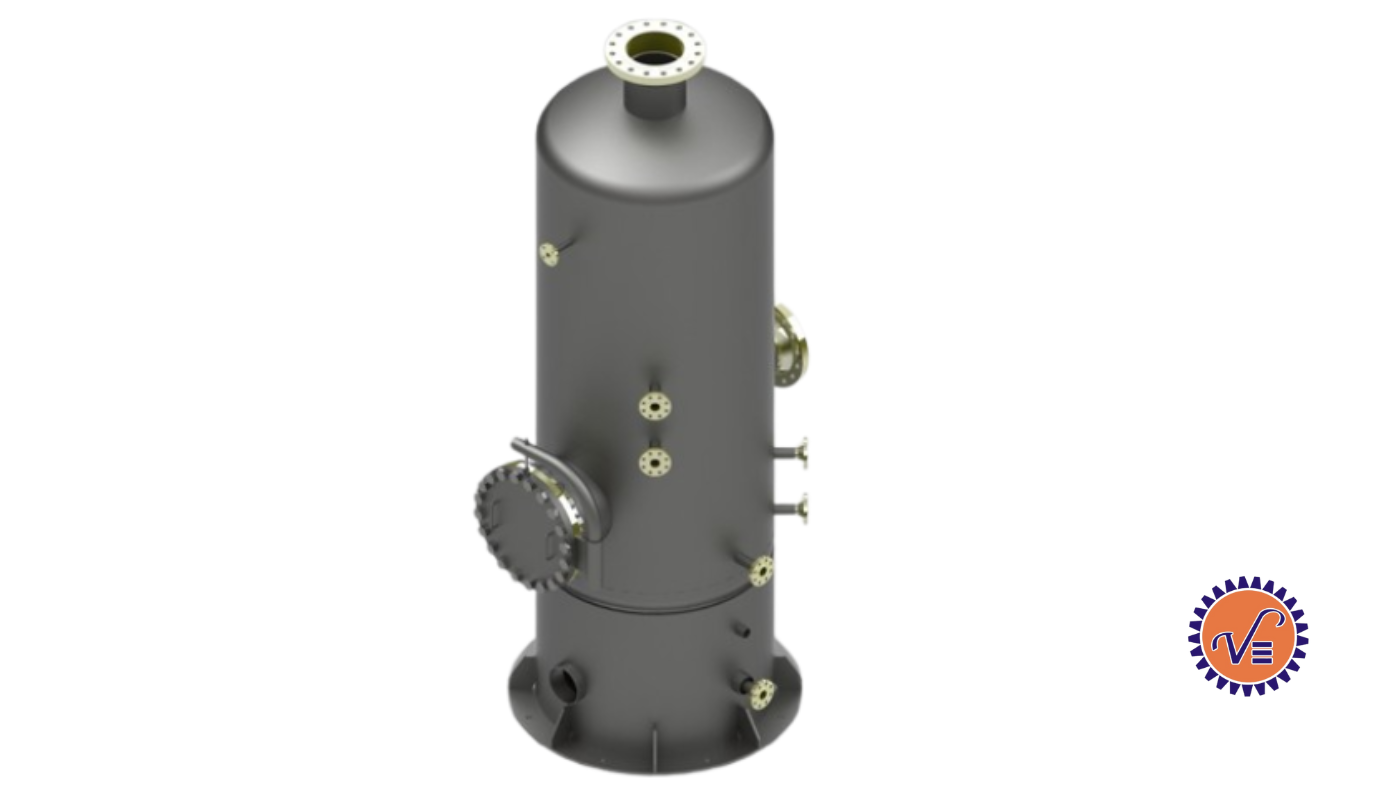In industries where gases and liquids mix during operations, equipment like the knock out drum becomes essential. This vessel helps separate liquids from gas streams, ensuring smoother processes and reducing risks. Many plants rely on such devices to maintain efficiency and safety standards. Exploring its role reveals why it stands out in process engineering.
Defining the Knock Out Drum
A knockout drum serves as a separator for vapor and liquid mixtures. Sometimes referred to as a flash drum or demister vessel, it captures liquid droplets carried in gas flows. The core idea involves slowing down the mixture inside a large container, allowing gravity to do the work. Liquids drop to the bottom, while gases escape from the top.
Designs vary based on needs. Vertical models suit applications with mostly gas and minimal liquid, providing ample height for separation. Horizontal versions handle larger liquid volumes, offering more space for accumulation. Sizing depends on flow rates, pressure, and the type of fluids involved.
Construction materials include sturdy options like carbon steel for general use or stainless steel for corrosive environments. Internal features, such as inlet distributors, help spread the flow evenly. Outlets are positioned to avoid re-entrainment of liquids into the gas.
Varun Engineering crafts these drums with attention to detail, aligning with operational demands.
The Working Mechanism Explained
When a gas-liquid stream enters the drum, the process begins at the inlet. The vessel’s volume causes a drop in velocity, which is key to separation. Heavier liquid particles settle under gravity, forming a pool at the base.
For finer mist or aerosols, additional aids like wire mesh pads or cyclone separators come into play. These coalesce tiny droplets into bigger ones, easing their fall. Drains remove the collected liquid, often automatically through level controllers.
The purified gas exits via the top nozzle, heading to compressors or other units. This prevents issues like erosion or blockages downstream. Regular monitoring of levels ensures no overflow occurs, keeping the system balanced.
Essential Parts of the Equipment
Breaking down the components highlights functionality:
- Inlet Assembly: Directs the mixture inside, often with baffles to reduce turbulence.
- Main Chamber: Provides the space needed for phase separation, calculated for residence time.
- Mist Eliminator: Traps small particles; types include vanes, pads, or centrifugal devices.
- Gas Outlet: Ensures clean vapor leaves without pulling liquids along.
- Liquid Drain: Connected to pumps or valves for removal.
- Instrumentation: Gauges, sensors, and alarms track pressure, level, and temperature.
- Safety Valves: Protect against overpressure, complying with codes.
These elements combine to make the drum reliable in demanding settings.
Why It Matters for Safety in Processes
Safety remains a top priority in chemical, oil, and manufacturing sectors. Knock out drums address several hazards effectively.
Equipment protection stands out first. Liquids in gas lines can harm rotating machinery, like causing imbalance in turbines or corrosion in pipes. Separation avoids such damage, extending equipment life.
Environmental benefits follow. Unseparated mixtures might lead to spills or improper flaring, releasing harmful substances. Clean separation supports better emission controls.
Efficiency gains are notable too. Pure gas streams improve reaction yields and reduce energy waste in compression.
From a risk perspective, poor separation could trigger overpressure or fires. Automated systems in drums detect issues early, allowing quick responses. Standards from organizations like OSHA emphasize their role in hazard prevention.
Maintenance routines, including inspections for wear, keep performance high. Varun Engineering incorporates safety-focused designs, aiding compliance.
Where Knock Out Drums Are Used
Diverse industries apply this technology:
- Petroleum Sector: At production sites, drums remove water from natural gas, preventing hydrate formation.
- Chemical Plants: In vapor recovery, they capture condensates from reactors.
- Energy Generation: Steam systems use them to eliminate moisture, avoiding damage to boilers.
- Food Processing: For air compression, ensuring dry air in packaging lines.
- Mining Operations: Handling compressed air with water separation.
Customization fits each use, from high-pressure oil fields to low-flow labs.
Tips for Maintenance and Optimization
Proper care extends drum lifespan. Schedule cleanings to remove sludge, and inspect internals for damage. Test controls regularly to confirm accuracy.
Selection involves assessing droplet sizes and velocities. Oversizing can be inefficient, while undersizing risks carryover. Expert input helps match specifications.
Upgrades, like better demisters, enhance performance over time.
Wrapping Up the Discussion
Knock out drums prove indispensable for safe and efficient operations. By isolating liquids from gases, they safeguard equipment, the environment, and personnel. Industries adopting quality separators see fewer incidents and better productivity.
Solutions from Varun Engineering support these goals, delivering tailored equipment. Awareness of such tools promotes advancements in process safety across fields.



Leave A Comment